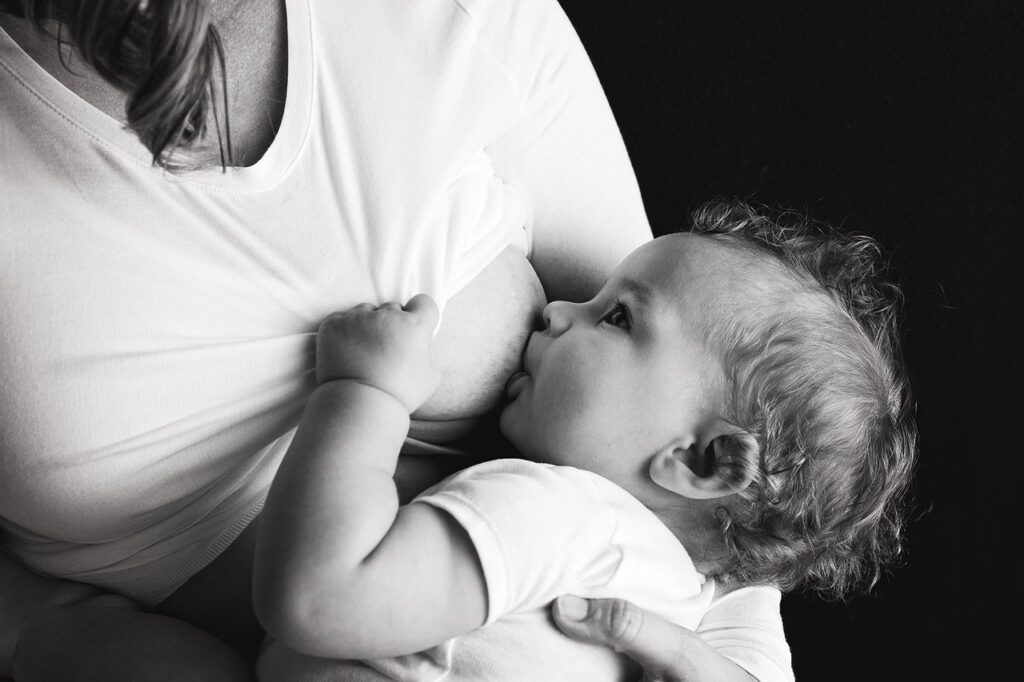
Advertisements on TV of mothers nursing their babies give the impression that it is easy and enjoyable all the time. In these perfect views, there is no indication of the issues that can arise with breastfeeding, among which are too much breast milk, thrush infections, blocked milk ducts, tongue tie, mastitis, as well as the possibility of a breast abscess.
Nursing mothers with excess milk may notice that their babies are fussy at the breast, have a lot of colic, flatulence, and reflux. They may gulp frequently, break off multiple times during a feeding, and later exhibit signs of gassiness, which may include frequent stools that may be large, frothy, and green, especially when the infant is consuming inadequate protein-rich hind milk. They may also have a shallow latch due to the overactive let-down reflex. Infants of mothers with oversupply may be misdiagnosed with gastroesophageal reflux disease, colic, or milk protein allergies(Smillie et al 2005).
How does one know if milk oversupply is the problem? There are a number of pointers. The baby gains weight excessively, and the mother notices that her breasts are not noticeably softened by feeding. Her breasts leak quite a lot and she may have the ability to pump several ml/ounces after a feed. If the mother is awakened at night by painful engorgement, when the baby seems satisfied and not yet ready to eat, then the question of oversupply needs to be examined. A breast milk oversupply also includes symptoms such as a feeling of fullness, breast pain, leaking breast, engorgement, plugged duct, sore nipples and mastitis.
Diet may be one cause of oversupply and this includes an overuse of galactagogues, which are herbal teas drunk to increase milk supply. The following foods are also considered to have a role in increasing milk supply: Oatmeal, spinach, broccoli, alfalfa, fennel, chickpeas, nuts and seeds, papaya and ginger. These foods need to be reduced, if not avoided, if one has excess milk, but these foods are useful if a low milk supply is the issue.
Remaining on the subject of diet, traditional Persian medicine associates an excess milk supply with too much blood humour. This concept equates, more or less, with ‘high/hot’ blood in the Irish tradition. High/hot blood is exacerbated in the spring and by eating too many sweet foods and meat products. Among the list of foods that increase high/hot blood are lamb, chicken, soft-boiled eggs, whole wheat bread, milk, particularly milk with honey or sugar, lettuce, grapes, bananas, figs, hazelnuts, and almonds, especially almonds with sugar.
There are some medical conditions also implicated in the over production of milk and among these are pituitary disorders, PCOS, liver and kidney issues, and some medications.
There are a number of ways an oversupply of breast milk may be resolved. Firstly, reduce intake of foods that promote milk production and introduce more vegetables into the diet. Lentils, and any dishes made from them, are good for regulating milk supply.
Secondly, there are topical applications and even though we are all familiar with the use of a cabbage leaf poultice at the first twinge of a painful breast, it is also good for reducing milk supply. Warming the cabbage leaf until it becomes very flexible, almost juicy, and ironing the leaf is one way of achieving this consistency. Make sure it is at a comfortable heat before placing over the breast. A cabbage leaf may also be applied as a cold poultice, as can the mashed root of cabbage. Keep in place with cling film or towel and remove after about thirty minutes. Using this poultice three or four times a day may well reduce milk supply and engorgement fairly quickly. Other topical applications include psyllium powder mixed to a paste, and broad bean flour combined with rose oil and vinegar. Fenugreek seeds or caraway seeds powdered and made into a paste with vinegar will also serve as poultices. A hot compress of parsley is appropriate for breast engorgement and breast pain and may also be added to the diet. A more sensuous poultice is one made from crushed, fresh, jasmine flowers which is then applied to the breast.
Herbs should only be introduced after diet and topical applications have failed, and even then, they need to be introduced with the utmost care. Sage (Salvia officinalis) is the most well-known herb used, and dried sage, about a quarter teaspoon, three times a day, can be added to soups and other food dishes. It can also be made as a tea. This can work quite dramatically so reduce dose to twice a day after day two and stop taking it after the third day.
Lemon balm and oregano are two other herbs that may help with the problem of oversupply and they too may be used as teas or incorporated into the diet. I have already mentioned the use of caraway as a poultice and it may also be incorporated into food. Most other herbs are best left to the professional as there is, currently, insufficient evidence of their effect or safety while nursing.



